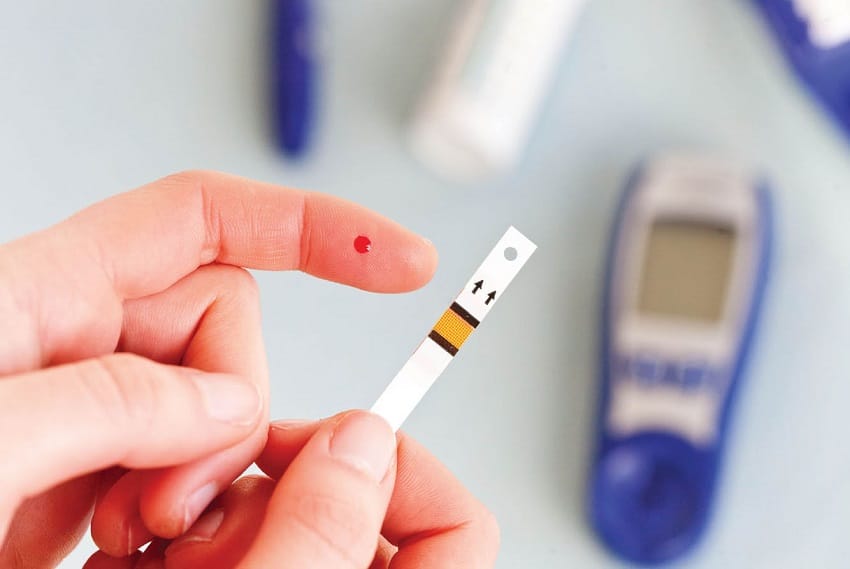
What’s diabetes?
Diabetes is a disorder that affects our body’s capability to either produce or use insulin. Insulin helps your body utilize bloodstream sugar for energy. Diabetes leads to bloodstream sugar (bloodstream glucose) that increases to abnormally high levels.
With time, diabetes leads to harm to bloodstream vessels and nerves, causing a number of signs and symptoms, including:
difficulty seeing
- tingling and numbness in the possession of and ft
- elevated risk for any stroke or heart attack
- An earlier diagnosis means you can begin treatment and do something toward fitness.
Who should undergo diabetes testing?
Continuing, diabetes might or might not cause many signs and symptoms. You need to get tested should you experience the early signs and symptoms which do sometimes occur, including:
- being very thirsty
- feeling tired constantly
- feeling very hungry, despite eating
- getting fuzzy vision
- urinating more frequently than normal
- getting sores or cuts that won’t heal
Many people ought to be tested for diabetes even when they aren’t experiencing signs and symptoms. The American Diabetes Association (ADA) recommends that you simply undergo diabetes testing if you are overweight (bmi more than 25) then drop into the following groups:
You’re a higher-risk ethnicity (African-American, Latino, Native American, Off-shore Islander, Asian-American, amongst others).
You’ve high bloodstream pressure, high triglycerides, low High-density lipoprotein cholesterol, or cardiovascular disease.
You’ve got a genealogy of diabetes.
You’ve got a personal good reputation for abnormal bloodstream sugar levels or indications of insulin resistance.
You do not participate in regular exercise.
You’re a lady with past pcos (PCOS) or gestational diabetes.
The ADA also recommends you undergo a preliminary bloodstream sugar test if you are older than 45. This can help you identify set up a baseline for bloodstream sugar levels. Since your risk for diabetes increases as we grow older, testing will help you identify the chance for developing it.
Bloodstream tests for diabetes
Bloodstream testing enables a physician to look for the amounts of bloodstream sugar in your body. The A1c is among the most typical because its results estimate bloodstream sugar levels with time, and it’s not necessary to fast.
The exam is also referred to as the glycated hemoglobin test. Its dimensions are just how much glucose has attached itself to red bloodstream cells within your body during the last 2 to 3 several weeks.
Since red bloodstream cells possess a lifespan of approximately three several weeks, the A1c measures your average bloodstream sugar for around three several weeks. The exam requires gathering only a tiny bit of bloodstream. The outcomes are measured inside a percentage:
- Outcomes of under 5.7 % are common.
- Results between 5.7 and 6.4 % indicate prediabetes.
- Results comparable to or more than 6.five percent indicate diabetes.
Diagnostic tests are standardized through the National Glycohemoglobin Standardization Program (NGSP). Which means that regardless of what lab performs the exam, the techniques to check the bloodstream are identical.
Based on the National Institute of Diabetes and Digestive and Kidney Illnesses, only tests which have been authorized by the NGSP should be thought about definitive enough to identify diabetes.
Many people might have varied results while using A1c. Including women that are pregnant or individuals with a unique hemoglobin variant which makes the exam results inaccurate. Your physician might point to alternate diabetes tests during these conditions.
Random bloodstream sugar test
An arbitrary bloodstream sugar test involves drawing bloodstream at any time, regardless of whenever you last ate. Results comparable to or more than 200 milligrams per deciliter (mg/dL) indicate diabetes.
Fasting bloodstream sugar test
Fasting bloodstream sugar tests involves getting your bloodstream attracted after you’ve fasted overnight, which often means refusing to eat for eight to twelve hrs:
- Outcomes of under 100 mg/dL are common.
- Results between 100 and 125 mg/dL indicate prediabetes.
- Results comparable to or more than 126 mg/dL after two tests indicate diabetes.
- Dental glucose tolerance test
The dental glucose test (OGTT) happens during the period of two hrs. Your bloodstream sugar is tested initially, after which you’re given a sugary drink. After two hrs, your bloodstream sugar levels are tested again:
- Outcomes of under 140 mg/dL are common.
- Results between 140 and 199 mg/dL indicate prediabetes.
- Results comparable to or more than 200 mg/dL indicate diabetes.
Urine testing for diabetes
Urine tests aren’t used identify diabetes. Doctors frequently rely on them when they think you might have your body. Your body produces ketone physiques when fat tissue can be used for energy rather of bloodstream sugar. Laboratories can test urine of these ketone physiques.
If ketone physiques can be found in moderate to considerable amounts within the urine, this might indicate bodies are not making enough insulin.
Gestational diabetes tests
Gestational diabetes can happen whenever a lady is pregnant. The ADA shows that women with risks ought to be tested for diabetes in their first visit to find out if they have diabetes. Gestational diabetes occur in the 2nd and third trimester.
Doctors could use two kinds of tests to identify gestational diabetes.
The very first is a preliminary glucose challenge test. This test involves consuming a glucose syrup solution. Bloodstream is attracted after an hour or so to determine bloodstream sugar levels. A direct result 130 to 140 mg/dL or fewer is recognized as normal. A greater-than-usual studying signifies the requirement for further testing.
The follow-up glucose tolerance testing involves refusing to eat anything overnight. A preliminary bloodstream sugar level is measured. The expectant mother then drinks a higher-sugar solution. The bloodstream sugar will be checked hourly for 3 hrs. If your lady has several greater-than-usual readings, the outcomes indicate gestational diabetes.
The 2nd test involves carrying out a two-hour glucose tolerance test, like the one described above. One out-of-range value could be diagnostic for gestational diabetes by using this test.
